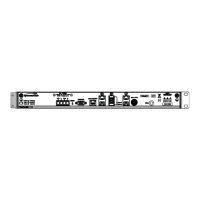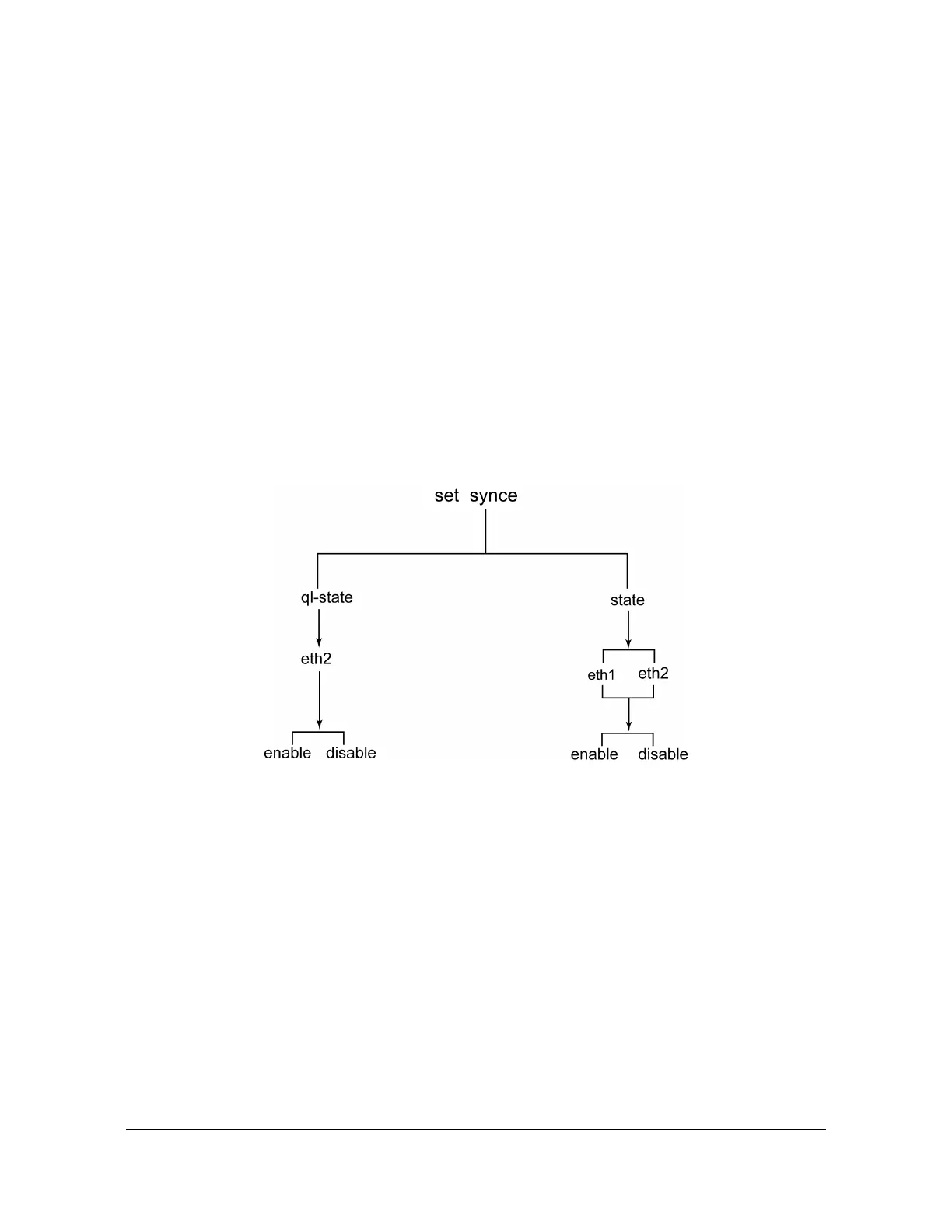212 TimeProvider 2300/2700 User’s Guide 098-00564-000 Revision A3 – July, 2013
Chapter 4 Provisioning
Provisioning Input Parameters
Provisioning SyncE Input
Synchronous Ethernet (SyncE) provides a method of distributing timing using the
physical layer of Ethernet devices. All intermediate nodes must have hardware and
software support for syncE. SyncE is used to distribute frequency through the
network. Synchronization Status Messaging (SSM) is passed between nodes in
ESMC messages. This allows nodes to determine the quality level of the upstream
node, to prevent timing loops, and also to reconfigure the timing path. The TP
2300/2700 receives the SSM information from a SyncE input and converts it to a
PQL value that can be used for reference selection. See Reference Selection
Criteria, on page 199 for details.
Other than the ESMC state (see Figure 4-15), the only parameters that can be
configured for a SyncE input reference on the ETH1 port are the port state, port
priority value, and the user-configurable PQL value. These parameters are all
configured with the
set ref command, as shown in Figure 4-7.
Figure 4-15. Set SyncE Command Hierarchy
Example:
To enable the ETH1 port for SyncE, use the RJ45 connector, R1, for the connection,
and enable to ESMC on the ETH1 port:
1. Login at the Admin or Config-user level.
2. Type
set ethernet active-connector eth1 r1-rj45 and press Enter.
3. Type
set synce state eth1 enable and press Enter.
4. Type
set synce ql-state eth1 enable and press Enter.

